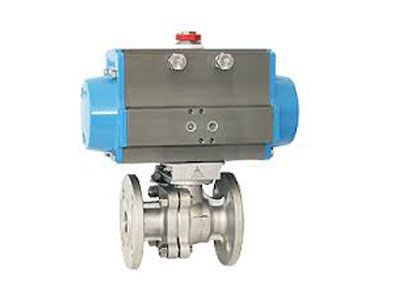Key Takeaway
Control valves are widely used across industries to regulate fluid flow, pressure, or temperature. In the oil and gas sector, they manage critical processes like refining and transportation. Water treatment facilities rely on them to ensure consistent pressure and flow rates in distribution systems. HVAC systems use control valves to maintain comfortable temperature and airflow levels.
In manufacturing, control valves are essential for maintaining precise conditions during production processes, such as mixing chemicals or controlling steam flow. Their versatility and ability to handle different fluids make them indispensable in industries ranging from power generation to pharmaceuticals.
Common Applications of Control Valves
Control valves are used in a wide range of applications across various industries to regulate the flow rate of fluid or gas. They are commonly found in chemical processing plants and power generation facilities.
In commercial and residential systems, control valves are essential components in heating and cooling systems, water treatment, and HVAC systems. They provide crucial flow regulation for efficient operation.
Specialized applications include cryogenic systems and high-purity processes, where precise flow control is vital. Understanding their applications is crucial for selecting the right valve for specific needs.

Industry-Specific Use Cases
Control valves (CVs) are widely used across industries to regulate fluid and gas flow. In the chemical and petrochemical industry, CVs maintain precise temperature, pressure, and flow conditions in reactors and pipelines, ensuring product quality and safety. These valves are essential for handling hazardous materials and maintaining a stable operational environment.
In the power generation sector, CVs control steam flow to turbines, optimizing energy production and efficiency. Their ability to respond to fluctuating demands makes them crucial in dynamic systems like power plants. Similarly, in the pharmaceutical industry, CVs play a pivotal role in maintaining sterile environments and ensuring precise control over ingredients in production processes.
You May Like to Read
Benefits of Using Control Valves
Control valves play a pivotal role in ensuring efficient and reliable operations across various industrial systems. These valves are crucial for regulating the flow, pressure, and temperature within pipelines, helping industries maintain operational stability while preventing equipment damage and optimizing energy use.
1. Precision Control: Control valves provide precise regulation of fluid or gas flow, making them essential for systems that require accurate and dynamic control. Whether it’s adjusting the flow of water in a treatment plant or controlling the temperature in a chemical reactor, these valves ensure that parameters stay within the desired range. Their ability to make incremental adjustments allows operators to maintain consistency in the system, contributing to the quality and safety of the process.
2. Energy Efficiency: By precisely controlling the flow of fluids, control valves help minimize energy consumption. Overflows and underflows can cause energy inefficiencies, leading to higher operational costs. Control valves, especially when integrated into automated systems, can adjust flow rates according to real-time conditions, helping to optimize energy use. This ability to regulate flow ensures that the system operates only as needed, thus saving energy and reducing costs.
3. System Protection: Control valves help protect other system components by preventing dangerous pressure surges and flow imbalances. Overpressure situations can lead to damage in pumps, pipes, and other equipment. Control valves act as a safeguard, maintaining pressure and flow within safe limits. They also help prevent cavitation, erosion, and water hammer, all of which could result in costly repairs and operational downtime.
Installation Guidelines for Optimal Performance
For optimal performance of control valves (CVs), proper installation is crucial. The first step is to ensure that the valve is properly sized for the system, based on factors like pressure, flow rate, and fluid type. An oversized or undersized valve can result in inefficient performance, leading to energy losses or system imbalances. The valve must be installed according to the manufacturer’s guidelines, with the flow direction indicated on the valve body and the correct orientation in the pipeline.
In addition, CVs should be positioned to minimize the risk of cavitation or erosion. Installing the valve in a location where fluid flow is steady and where there is minimal turbulence is essential. Proper sealing is also necessary to prevent leaks and maintain system pressure. The valve should be installed in a straight section of pipe to allow for smooth fluid flow.
Finally, it is important to check the valve’s functionality after installation. Proper testing and commissioning are required to ensure that the valve opens and closes correctly under the specified operating conditions. This includes verifying that the valve responds to control signals accurately and maintains the desired flow, pressure, and temperature.
Maintenance Tips for Longevity
To maximize the lifespan of control valves (CVs), implement a consistent maintenance routine. Begin with regular inspections to check for leaks, corrosion, and physical damage. Addressing minor issues early prevents costly repairs and downtime.
Clean the valve components to remove debris that might obstruct flow or cause wear. Lubricate moving parts to ensure smooth operation and reduce the risk of seizing. Replace damaged or worn parts, such as seals and diaphragms, promptly to maintain system integrity.
Record maintenance activities in a log for future reference. This documentation helps track performance trends and identify recurring issues. Following manufacturer recommendations for maintenance intervals and procedures is also critical for ensuring long-lasting valve performance.
Conclusion
Control valves are integral components in various industries, providing precise regulation of fluid and gas flow. They are commonly used in chemical processing, oil and gas, water treatment, and HVAC systems to maintain optimal operating conditions.
In addition to industrial applications, control valves are also used in residential and commercial systems, such as heating and cooling systems, to ensure efficient operation. Understanding their applications is crucial for selecting the right control valve for specific needs, ensuring efficiency and reliability.
